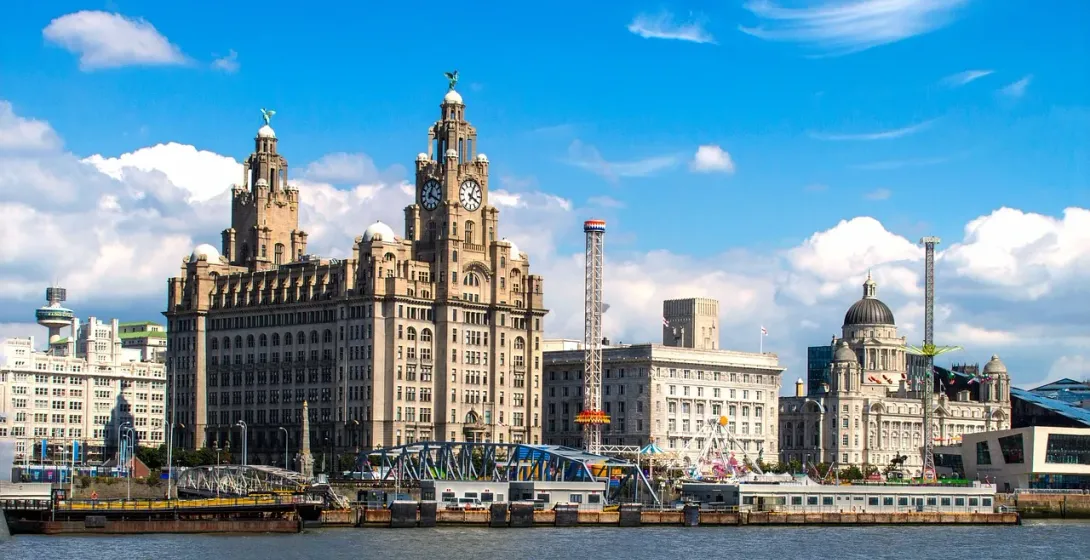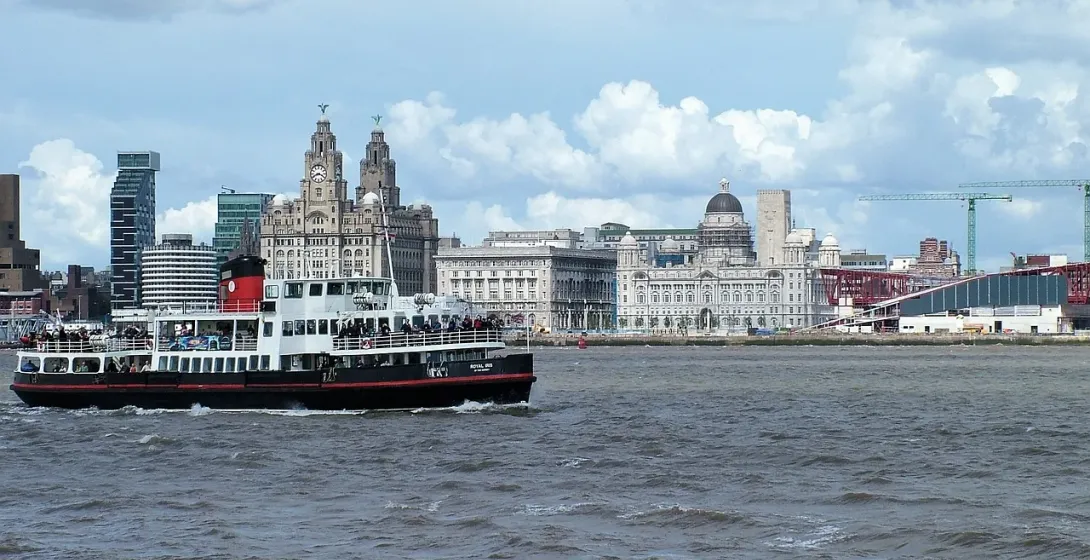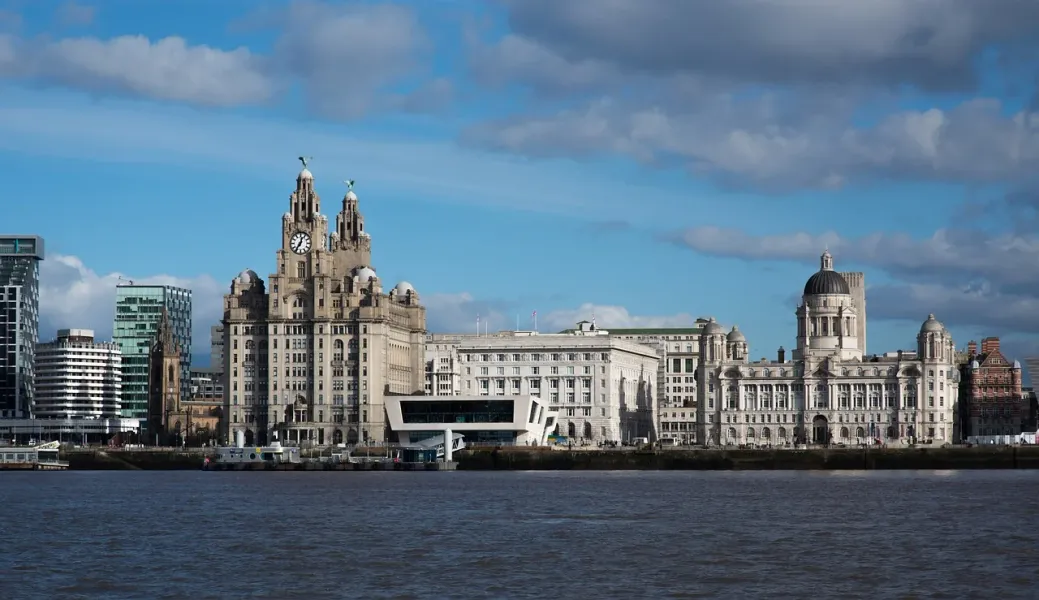Free Walking Tour of Liverpool: The Beatles, Titanic & Waterfront
History of Liverpool’s port and culture: from Atlantic trade and the slave economy to Titanic and The Beatles. We cover the city centre and waterfront—William Brown Street, Cavern Quarter and Pier Head—with stops at the Cavern Club, Beatles statue, Town Hall, Royal Albert Dock and the Three Graces.

Basic Information
Total time
2h 30m
Language
English, Spanish (check the calendar for availability)
Price
Our “Pay What You Wish” tours don’t have a fixed price — you decide how much the experience was worth. At the end of the tour, please make a fair contribution that reflects your satisfaction and appreciation for your guide’s work. Most guests give between €10 and €50 per person.
Meeting point
Steble Fountain Nearest public transport: Lime Street Low Level metro station; Liverpool Lime Street train station
Additional info
☂︎ This tour is organised by KR Tours guides. Look for the guide with the rainbow umbrella.
Booking rules
Booking is obligatory. Our “Pay What You Wish” tours are meant for individual travellers and small groups. Large groups (7 or more people) cannot join these tours, as they significantly affect the experience for others and the guide. For school trips, organised tours, or groups of friends, please arrange a Private Tour. For more information or to schedule a group visit, please contact us directly.
About the tour

The beginnings of a great worldwide trade, the remarkable transformation of a small, sleepy village into a leading trade metropolis and the richest city in England, the birthplace of Titanic and The Beatles. A city that through its history had its great ups and very low-downs and experienced an amazing transformation and revival in recent years. Discover with us the fascinating city of Liverpool!
There was a time when the British Empire was unquestionable power on a global scale. And there was a city that underpinned this success. The name of that city was Liverpool. All kinds of goods were shipped via the port of Liverpool, flowing here from the Empire’s colonies and other continents – sugar, tobacco, coal and cotton. However, the basis of the power of both Liverpool and the British Empire was dark and horrible – it was the slave trade that brought here enormous profit. Then, when it was finally abolished (and people native to Liverpool have been at the forefront of the fight for it), from the beginning of the 19th century the city was known as “the New York of Europe” – a place where masses of people were flowing in from all corners of the continent. Some were desperate to leave its shores, crossing the Atlantic Ocean, chasing the American dream. In the 19th century Liverpool became a leading global cargo port that introduced and supported modern technology and innovations which quickly spread around the world. In the 20th century, Liverpool has fallen low and very painfully. The city went through many hardships: social unrest, race riots, poverty, World War II destruction, unemployment. And then all of a sudden, not in the commerce field any longer, but still as the offspring of the heritage of the city, always open to the world and prone to the influences from many countries and continents, Liverpool became a leader in a whole different field. It gave birth to some of the greatest bands known to music history, especially the most influential one to this day – The Beatles.
Take a walk with us through this city of trade, Titanic and The Beatles. Starting from William Brown street, through the famous Cavern Quarter and Cavern Club where The Beatles started, up to the port and Royal Albert Dock – the landmark of the city, former warehouse that today is the centre of culture, art and nightlife. During the tour we will search together for the relics of the Liverpool castle and see the architectural icons of the city, especially the marvellous Three Graces: the Royal Liver Building, Cunard Building and Port of Liverpool Building, all located at the Pier Head. We will also talk about the history of the Titanic and its tragedy, which took the lives of many citizens of Liverpool.
The history of Liverpool gives us an incredible insight to the creation of the global market, and it proves to be the outstanding legacy of the mixing of cultures and influences from different corners of the world where once the British Empire stretched. Soak with us the atmosphere of Liverpool and witness its amazing transformation from neglected and rundown port city into a vibrant cultural centre full of museums, art galleries and lush green zones.
Highlights
- 1
The Cavern Club
The legendary music venue where The Beatles launched their incredible career in the early 1960s.
- 2
Royal Albert Dock
A historic dock complex, now a vibrant hub for museums, galleries, restaurants, and shops.
- 3
The Three Graces
A trio of iconic buildings at Pier Head that define Liverpool's famous waterfront skyline.
- 4
The Beatles Story
Follow the story of the Fab Four, the world's most influential and famous music band.
- 5
Titanic History
Learn about the tragic connection between the famous ship and its home port, Liverpool.
- 6
Maritime Trade Legacy
Discover Liverpool's past as a leading global port and centre of the British Empire.
- 7
Liverpool Town Hall
A stunning example of Georgian architecture and one of the country's finest town halls.
Map
Steble Fountain Nearest public transport: Lime Street Low Level metro station; Liverpool Lime Street train station







